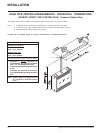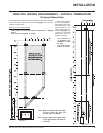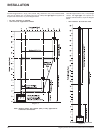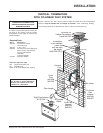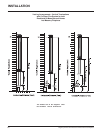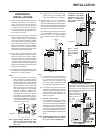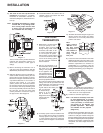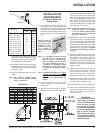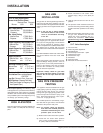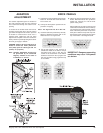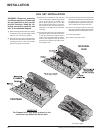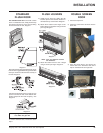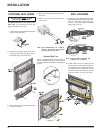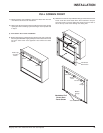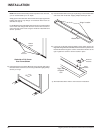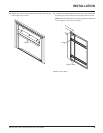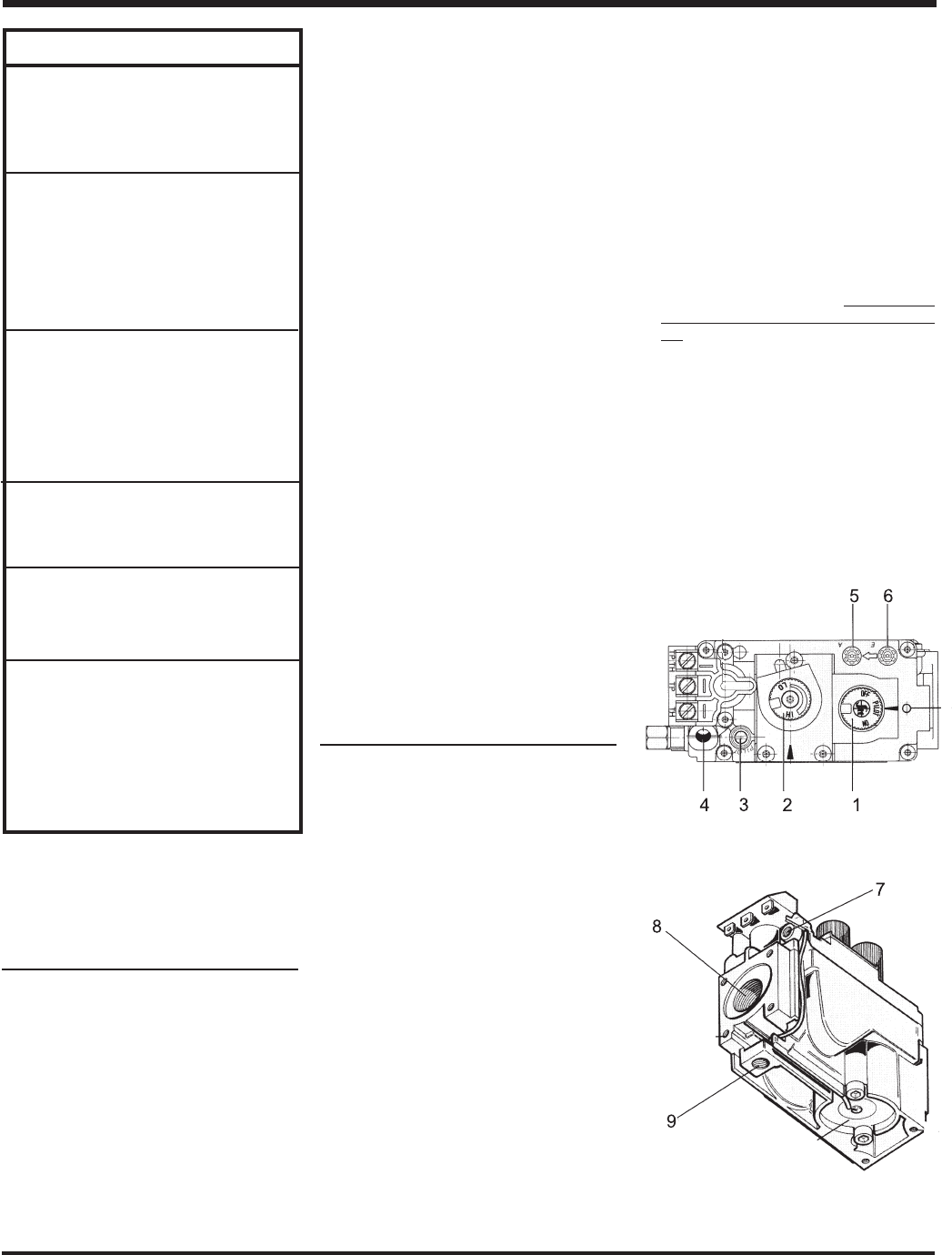
Regency P42-3 Zero Clearance Direct Vent Gas Fireplace
22
GAS LINE
INSTALLATION
The gas line can be brought through either the
right or the left side of the appliance. The gas
valve is situated on the right hand side of the unit
and the gas inlet is on the right hand side of the
valve.
Note: If the gas line is being installed
from the left side, be sure to leave
room to accommodate servicing
of the fan.
The gas line connection may be made of rigid
pipe, copper pipe or an approved flex connec-
tor. (If you are using rigid pipe, ensure that the
valve can be removed for servicing.) Since
some municipalities have additional local codes
it is always best to consult with your local
authorities and the CAN/CGA B149 installation
code.
For USA installations follow local codes and/or
the current National Fuel Gas Code, ANSI
Z223.1.
When using copper or flex connectors use only
approved fittings. Always provide a union so
that gas lines can be easily disconnected for
burner or fan servicing. Flare nuts for copper
lines and flex connectors are usually consid-
ered to meet this requirement.
Important: Always check for gas leaks
with a soap and water solution or gas leak
detector. Do not use open flame for leak
testing.
GAS PIPE PRESSURE
TESTING
The appliance must be isolated from the gas
supply piping system by closing its individual
manual shut-off valve during any pressure
testing of the gas supply piping system at test
pressures equal to or less than 1/2 psig. (3.45
kPa). Disconnect piping from valve at pres-
sures over 1/2 psig (3.45 kPa).
The manifold pressure is controlled by a regu-
lator built into the gas control, and should be
checked at the pressure test point.
Note: To properly check gas pressure,
both inlet and manifold pressures
should be checked using the valve
pressure ports on the valve.
1) Make sure the valve is in the "OFF" position.
2) Loosen the "IN" and/or "OUT" pressure
tap(s), turning counterclockwise with a 1/
8" (3mm) wide flat screwdriver.
Note: Output capacity. The efficiency rating
of the appliance is a product thermal efficiency
rating determined under continuous operating
conditions and was determined independently
of any installed system. Vent height may or may
not change your efficiency ratings.
HIGH ELEVATION
This unit is approved in Canada for altitude 0 to
4500 ft. (CAN1 2.17-M90) with the orifice sup-
plied.
System Data
For 0 to 4500 feet altitude
Burner Inlet Orifice Sizes:
Natural Gas Propane
Burner #33 #50
Max. Input Rating
- Natural Gas 35,000 Btu/h
- Propane 35,000 Btu/h
Min. Input Rating
-Natural Gas 17500 Btu/h
-Propane 17500 Btu/h
Output Capacity with blower Off
Natural Gas 25,725 Btu/h
Propane 26,740 Btu/h
Output Capacity with blower On
Natural Gas 26,250 Btu/h
Propane 27,300 Btu/h
Supply Pressure
Natural Gas min. 5.0" w.c.
Propane min. 11.0" w.c.
Manifold Pressure (High)
Natural Gas 3.8" +/- 0.2" w.c.
Propane 10" +/- 0.2" w.c.
Electrical: 120 V A.C. System.
Circulation Fan: variable speed
130 CFM.
Log Set: Ceramic fibre, 3 per set.
Vent System: Simpson
Dura-Vent
Direct Vent System
or Regency Direct
Vent System (Flex)
3) Attach manometer to "IN" and/or "OUT"
pressure tap(s) using a 5/16" (8mm) ID
hose.
4) Light the pilot and turn the valve to "ON"
position.
5) The pressure check should be carried out
with the unit burning and the setting should
be within the limits specified on the safety
label.
6) When finished reading manometer, turn off
the gas valve, disconnect the hose and
tighten the screw (clockwise) with a 1/
8"(3mm) flat screwdriver. Note: Screw
should be snug, but do not over tight-
en.
S.I.T. Valve Description
1) Gas cock knob
2) Manual high/low adjustment
3) Pilot Adjustment
4) Thermocouple Connection - option
5) Outlet Pressure Tap
6) Inlet Pressure Tap
7) Pilot Outlet
8) Main Gas Outlet
9) Alternative TC Connection Point
INSTALLATION



